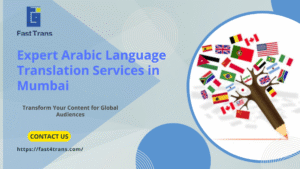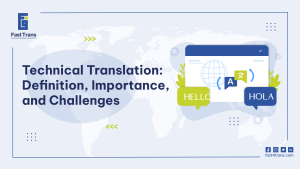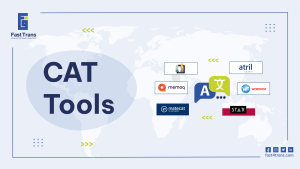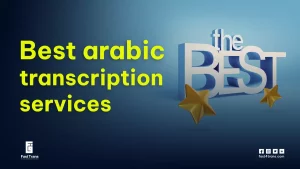Arabic cultural localization tailors products and services to resonate with Arabic-speaking audiences by adapting language, visuals, and content to fit regional dialects, cultural values, and traditions. It’s not just about translation but understanding local customs, religious practices, and buying behaviors to create an authentic, relatable experience.
By respecting cultural nuances, using region-specific SEO, and ensuring seamless customer support, businesses can foster stronger connections, boost engagement, and build trust with their Arabic audience. It’s a key strategy for standing out and avoiding costly missteps in a diverse, competitive market.
What is Arabic Cultural Localization?
Arabic cultural localization is when you cater your product, service, or platform specifically for Arabic-speaking audiences across various regions, such as the Middle East and North Africa.
It is a detailed type of localization that requires a deep understanding of the Arabic language as well as the local customs, values, traditions, folklore, and history of Arabic cultures.
When working with Arabic cultural localization, you want to make sure that your product or service feels like a native brand, seamlessly integrating into the Arabic market rather than appearing as a foreign entity trying to impose itself.
Arabic-speaking customers can tell the difference in a blink of an eye!
By prioritizing Arabic cultural localization, you ensure increased engagement with customers in the target regions, fostering a strong bond that leads to loyalty and trust. Neglecting cultural localization can result in losing valuable nuances and meanings in translation.
Therefore, it’s more than translation—it’s about finding the most culturally and contextually appropriate way to evoke the intended meaning and connect with the Arabic audience.
Why does Arabic Cultural Localization matter?
When you consider the culture of Arabic-speaking audiences, customers will show greater interest in the service or product you provide. This helps you create a product that resonates deeply with their values and traditions, increasing positive feedback and ultimately boosting sales and fostering a sustainable product cycle.
You also ensure that your linguistic structure aligns with the richness of the Arabic language, avoiding bland or unimaginative expressions that could alienate the audience.
Additionally, ensuring that your content feels relatable and familiar to Arabic customers enhances your credibility in the market, making your business appear trustworthy in their eyes.
Moreover, by employing cultural localization for Arabic audiences, you avoid offensive language or potential miscommunications that could arise from cultural misunderstandings. Failing to acknowledge the nuances of Arabic culture and relying instead on stereotypes significantly increases the risk of miscommunication, potentially damaging your brand’s reputation beyond repair.
Unfortunately, even high-end brands have fallen into this trap, underscoring the importance of cultural sensitivity and proper localization for success in the Arabic market.
Strategies for Arabic cultural localization
A cultural localization strategy is simply the company’s plan or approach to display or adapt its content and services in the Arab world. This means that when crafting a strategy for your project, you need to address the differences not only in the Arabic language but also in the cultural and social norms of the region.
Your strategy should include:
1) The languages spoken in Arabic-speaking countries
2) Cultural and societal attitudes in the Arab region
3) Purchasing habits and behaviors specific to Arabic-speaking markets
1. One Language, Different Dialects
Knowing that the region speaks Arabic is simply not enough for you to localize your product effectively. For instance, it is common knowledge that Arabic is the official language across many countries. However, if you attempt to localize your product using Modern Standard Arabic (MSA) in regions where local dialects like Egyptian Arabic or Gulf Arabic are dominant, the content might feel detached or less relatable to the audience.
It is also very important to take into consideration the fact that Arabic-speaking countries have diverse dialects and cultural expressions that vary significantly by region. For example, Moroccan Arabic is quite different from Levantine Arabic in terms of vocabulary, pronunciation, and usage.
2. Cultural and Societal Attitudes in the Arab World
You must take into consideration things like the climate, traditions, and social norms of the region to ensure that your product aligns with the cultural expectations of Arabic audiences. For example, modesty in imagery, respect for religious practices such as prayer times, and sensitivity to gender roles are key considerations when localizing for Arab cultures. Additionally, incorporating important cultural events like Ramadan or Eid into your strategy can help make your product more appealing and culturally relevant.
3. Purchasing Habits and Behaviors in the Arab Region
Much like the cultural and societal attitudes, the purchasing habits and behaviors of Arabic-speaking consumers are crucial for your localization strategy. It is important to fully understand the audience’s buying behaviors, such as the preference for deals during major shopping periods like Ramadan or Black Friday, as well as the growing reliance on mobile payments and online shopping in the region.
Local competitor research will also provide valuable insights into the preferences and expectations of Arab consumers, helping you better position your product in this competitive market.
Key Considerations for Arabic Cultural Localization
Effective Arabic cultural localization for SEO involves using Modern Standard Arabic (MSA) for content while considering regional dialects, adapting designs for RTL layout, and ensuring cultural and religious sensitivity. Localize visuals, pricing, support, and comply with legal regulations to build meaningful connections with the target audience.
1. Language and Dialects:
- Use Modern Standard Arabic (MSA) for written content, ensuring broad understanding across regions.
- Consider local dialects (e.g., Egyptian, Gulf) for specific markets to create a more personalized connection.
2. Right-to-Left (RTL) Layout:
- Adapt your UI and design for RTL text direction, ensuring proper alignment of text, menus, and navigation.
- Test for text overflow or misalignment issues that may arise due to the RTL formatting.
3. Cultural Sensitivity in Visuals:
- Modify character designs, clothing, and overall visual aesthetics to align with local customs, especially in gaming and entertainment content.
- Avoid imagery or symbols that may be perceived as offensive or disrespectful in the Arab world.
4. Respect for Religion and Traditions:
- Avoid content that conflicts with Islamic values, such as depictions of alcohol, gambling, or explicit themes.
- Consider religious observances like Ramadan and Eid when planning content releases or promotional offers.
5. Date and Time Formats:
- Use the Arabic calendar alongside the Gregorian calendar where necessary, especially during religious holidays or events.
- Adjust date and time formats to the local conventions, such as writing the date in day-month-year format.
6. Monetary and Payment Systems:
- Adapt pricing to local currency (e.g., Saudi Riyal, UAE Dirham) and regional payment preferences (e.g., local credit cards, mobile wallets).
- Consider regional tax structures and pricing strategies based on the market’s economic conditions.
7. Fonts and Typography:
- Choose Arabic-friendly fonts that support proper letter shapes, diacritics, and kerning.
- Ensure readability with appropriate font sizes and spacing, especially for in-game text and user interfaces.
8. Cultural Relevance of Content and Messaging:
- Tailor your messages to resonate with local values, emphasizing family, community, hospitality, and trust.
- Avoid references or jokes that may not translate well or could be misunderstood by the Arabic-speaking audience.
9. Localized Customer Support:
- Offer customer support in Arabic through various channels, including chat, email, and phone, with native speakers on staff.
- Ensure that FAQs, manuals, and help sections are translated accurately and reflect regional variations in terminology.
10. Legal and Regulatory Compliance:
- Understand and comply with local laws and regulations regarding content, data privacy, and advertising, especially in countries with strict censorship.
- Consider cultural regulations when dealing with sensitive topics, such as political or social issues.
How to implement Arabic cultural localization?
To implement Arabic cultural localization, focus on accurate language translation, culturally relevant visuals, and Arabic-specific SEO with tailored keywords to enhance visibility. Retain brand identity while adapting to cultural values like family and trust to build strong connections with the audience.
1. Maximize Translation and Localization
Language is a key component of any localization strategy, especially when catering to Arabic-speaking audiences. Arabic is not only a language but also a cultural connector across diverse regions. By localizing your product, website, or service into Arabic, you eliminate barriers and directly communicate with your target audience. This includes ensuring accurate translation of your media and integrating visuals that resonate with Arabic cultural norms and preferences. For instance, avoid using imagery that might conflict with Islamic values or traditions, such as inappropriate clothing or symbols.
2. Use Multilingual SEO
Search Engine Optimization (SEO) tailored to Arabic is essential for visibility in the region. Leverage Arabic keywords and phrases to make your website or product more discoverable to Arabic speakers. This approach ensures your audience can find your services when searching in Arabic, thereby increasing reach, engagement, and conversions. With competition growing in the Arabic-speaking markets, prioritizing Arabic SEO can help your brand lead the rankings and stand out among competitors.
3. Maintain Brand Identity
Adapting your brand identity to align with Arabic cultural values is crucial, but it is equally important to retain the essence of your original identity. For instance, focus on values such as family, community, and trust, which resonate strongly with Arabic consumers. According to a Google study, around 82% of consumers prefer brands that reflect their own values. By integrating these cultural elements into your products and services, you ensure your brand is both relatable and distinguished in the Arabic market while preserving its unique identity.
Tips for Choosing a Professional Arabic Cultural Localization Partner
Selecting the right localization partner for your Arabic audience is crucial to the success of your project. Arabic localization is not just about translation; it involves understanding the language, culture, and nuances that make the experience truly authentic for Arabic speakers. Here are some key tips to help you choose a professional Arabic cultural localization partner:
1. Look for Native Arabic Experts
Ensure that your localization partner employs native Arabic speakers who have an in-depth understanding of regional dialects, cultural references, and local customs. A native-speaking team can identify subtle cultural nuances that non-native speakers might miss. They should be well-versed in the specific dialects of the target region, whether it’s Modern Standard Arabic or a particular regional dialect like Gulf, Egyptian, or Levantine Arabic.
2. Experience in Cultural Sensitivity
Your localization partner should have proven experience in handling culturally sensitive content. This includes adapting visuals, symbols, and colors to align with Arabic traditions and values. They should be able to navigate through the complexities of religion, gender norms, and social customs without misrepresentation or offense. Look for a partner who is aware of Islamic customs, holidays, and local taboos to ensure your content is appropriate and respectful.
3. Expertise in Your Industry
Choose a localization partner who has experience in your specific industry. Whether you’re localizing a video game, e-commerce platform, or corporate website, it’s essential that your partner understands the terminology and specific requirements of your field. For example, medical, legal, or technical translations require specialized knowledge to maintain accuracy and compliance.
4. Comprehensive Localization Services
A professional localization partner should offer more than just translation. Look for a partner who can handle a full spectrum of services, including text translation, UI/UX adjustments, cultural consultation, voiceovers, and multimedia localization. This ensures that your product is thoroughly localized across all touchpoints, from written content to multimedia elements.
5. Ability to Adapt to Regional Preferences
Arabic-speaking regions are diverse, and each country or area can have different preferences. For instance, a game localized for Saudi Arabia may need different content from one targeted at the UAE or Egypt. Your localization partner should understand the unique cultural, political, and societal preferences in each region. They should be flexible enough to tailor your content to suit the specific expectations and behaviors of different Arabic-speaking audiences.
6. Use of Professional Localization Tools
A reliable localization partner should use industry-standard translation and localization management tools. These tools help streamline the process, ensure consistency across different translations, and provide quality control. Look for partners who use tools such as CAT (Computer-Assisted Translation) software, as well as Quality Assurance (QA) systems, to guarantee that your localized content is accurate and of high quality.
7. Clear Communication and Project Management
Your localization partner should have a transparent project management process, with clear communication at every stage of the project. Ensure that they provide timelines, updates, and a system for resolving any potential issues quickly. The localization process can be complex, so effective communication and project management are key to avoiding delays or misunderstandings.
8. Quality Assurance and Testing
The best localization partners don’t just translate content – they also perform rigorous testing to ensure that your product works flawlessly in the Arabic-speaking market. This includes linguistic, functional, and cultural QA testing. Make sure your partner provides a final check to ensure that everything is culturally appropriate and performs well, whether it’s a website, app, game, or marketing material.
9. Scalability for Future Growth
As your business grows, your localization needs may evolve. Choose a partner who can scale their services to accommodate future expansions or updates. Whether you need to add new languages, update content, or expand to new Arabic-speaking regions, your localization partner should have the capacity and flexibility to handle ongoing and evolving requirements.
10. Client Reviews and Case Studies
Before making your final decision, take the time to check the partner’s reputation. Look for client reviews, testimonials, and case studies that demonstrate successful localization projects for similar industries or target audiences. A strong portfolio with real-world examples of Arabic localization will give you confidence in their ability to deliver high-quality, culturally relevant work.
Choosing a professional Arabic cultural localization partner is not a decision to be taken lightly. By following these tips, you can find a partner who not only translates your content but also adapts it to the language, culture, and preferences of the Arabic-speaking audience, ensuring your product resonates deeply and successfully in the region.
Why Choose Fast Trans for Arabic Cultural Localization?
When it comes to localizing your content for the Arabic market, choosing the right partner is crucial to ensure your message resonates with local audiences while respecting cultural sensitivities. Fast Trans stands out as a top choice for Arabic cultural localization for several compelling reasons:
1. Expert Knowledge of Arabic Culture
Fast Trans understands that Arabic localization goes beyond mere translation. The Arabic-speaking world is diverse, spanning across multiple countries and cultures, each with its own customs and preferences. Fast Trans employs native Arabic-speaking experts who have an in-depth understanding of these cultural nuances. From language preferences to visual aesthetics and cultural values, Fast Trans ensures that your content is tailored to feel authentic and relatable to Arabic speakers across the region.
2. Native Translators with Specialized Skills
One of the key aspects of successful Arabic localization is the use of native translators who are not only fluent in Arabic but also skilled in the subject matter. Fast Trans prides itself on employing a team of native Arabic speakers who have expertise in various fields such as business, legal, medical, and technical translations. This ensures that your content is not only linguistically accurate but also culturally appropriate, making it more effective and impactful.
3. Right-to-Left (RTL) Adaptation Expertise
Arabic is a right-to-left language, and this affects not only the text but also the overall design and layout of your content. Fast Trans is proficient in adapting your website, application, or product interface to suit RTL formatting, ensuring a seamless and user-friendly experience for Arabic users. They make sure that the entire UI/UX is optimized for Arabic speakers, avoiding issues like misalignment or content overflow that can result from poor RTL adaptation.
4. Culturally Sensitive Content Creation
Fast Trans recognizes the importance of cultural sensitivity when localizing content for Arabic markets. They take great care in adjusting images, symbols, and even colors to ensure that your content aligns with the cultural values and norms of the Arabic-speaking world. Whether it’s avoiding imagery that may be deemed inappropriate or choosing visuals that reflect local preferences, Fast Trans ensures your content does not alienate or offend your target audience.
5. SEO Optimization for Arabic
Localization doesn’t stop at translation; it also extends to search engine optimization (SEO). Fast Trans offers multilingual SEO services tailored specifically for the Arabic language, ensuring that your content ranks well in Arabic search engines and is easily discoverable by Arabic speakers. By optimizing keywords and meta descriptions in Arabic, Fast Trans ensures your brand stands out in a crowded digital landscape, driving more traffic and engagement from your Arabic-speaking audience.
6. Quick Turnaround Without Compromising Quality
Fast Trans understands the importance of timely delivery without sacrificing quality. They offer efficient localization services that cater to your deadlines while maintaining the highest standards of accuracy and cultural relevance. Whether you’re launching a new product, updating a website, or preparing marketing materials, Fast Trans can provide a fast yet thorough localization process to meet your needs.
7. End-to-End Localization Services
From initial translation to final testing and optimization, Fast Trans offers comprehensive localization services. Their team handles everything from linguistic translation to cultural adaptation, ensuring that your content resonates with the target audience on every level. Additionally, Fast Trans offers quality assurance and testing, checking for both linguistic errors and cultural inconsistencies to guarantee that your localized content is flawless.
8. Proven Track Record with Leading Brands
Fast Trans has worked with some of the leading global brands looking to localize for Arabic-speaking audiences. With a proven track record of successful projects, they bring experience and expertise to every job, ensuring that your Arabic localization efforts are handled with care, professionalism, and the expertise necessary for success.
Conclusion
Arabic cultural localization involves adapting products, services, or platforms to suit the unique language, customs, and traditions of Arabic-speaking audiences, especially in regions like the Middle East and North Africa. This process goes beyond mere translation, ensuring that the content aligns with local dialects, societal norms, and cultural values. By integrating regional preferences and respecting religious practices, businesses can foster stronger connections with Arabic consumers, leading to greater engagement and customer loyalty.
Successful localization requires a deep understanding of Arabic dialects, cultural attitudes, and buying behaviors. It also includes considerations like right-to-left text formatting, appropriate visuals, and respect for religious observances. Employing localized SEO strategies with region-specific keywords and ensuring customer support in Arabic can further enhance brand visibility and trust in the market. The goal is to create a seamless and culturally relevant experience, avoiding miscommunications that could damage a brand’s reputation.











